The Uffizi displays their marble treasures: the Divina Simulacra exhibition
In Florence, the Uffizi puts the collection’s ancient marble treasures on display. The museum’s finest ancient statues, as never before seen, in the ground-floor rooms, where visitors will be able to see and admire them up close. This is the major exhibition Divina Simulacra. Masterpieces of Classical Sculpture from the Gallery, scheduled from Dec. 12, 2023 to June 30, 2024, which for the first time allows visitors to admire the Uffizi’s ancient statues... in the round.
It is well known that the first works of art to enter the newly completed Vasari complex, back in the 1680s, were the ancient marbles from the collection of Cosimo I, which had been kept in the Pitti Palace until then. It was thanks to Ferdinand I that the precious sculptures were placed in the eastern corridor on the top floor, where they could be admired completely bathed in natural light. During the 17th century, the statues and portraits spread, occupying the southern corridor and, with the reign of Cosimo III, the western one as well. Cosimo III is also credited with the idea of having large antique sculptures placed in the Tribune. Among these was the Medici Venus, destined to become the icon and symbol of the Florentine museum for the next two centuries.
For a short time, some of the Uffizi’s most celebrated classical works will thus be placed out of their historical locations: the objective of Divina Simulacra is in fact to return to the full enjoyment of the public masterpieces that in some cases are difficult to appreciate up close in their most evocative details, and to propose juxtapositions between the different sculptures, impossible to achieve in the context of the ordinary exhibition.
As part of the exhibition, the Medici Venus finally returns to be seen up close and no longer from a considerable distance, as the ban on public access to the Tribune has imposed for years; and she is again surrounded by those effigies of Venus, such as Venus Aurea and Caelestis, which, until the end of the 18th century, crowned her inside theinterior of the Tribune, so much so as to suggest to visitors the impression that this environment was “a little Temple inhabited by Goddesses” (“a little temple inhabited by goddesses,” according to Edward Wright, 1730).
The exhibition juxtaposes for the first time individual replicas of classical marble groups that, in the historical setting, are placed in different places in the Gallery. Thus the Dancing Faun of the Tribune finds the Seated Nymph arranged in the second corridor, so as to recompose the group of the “Invitation to Dance,” one of the masterpieces of Hellenistic statuary of the Micro-Asiatic sphere.
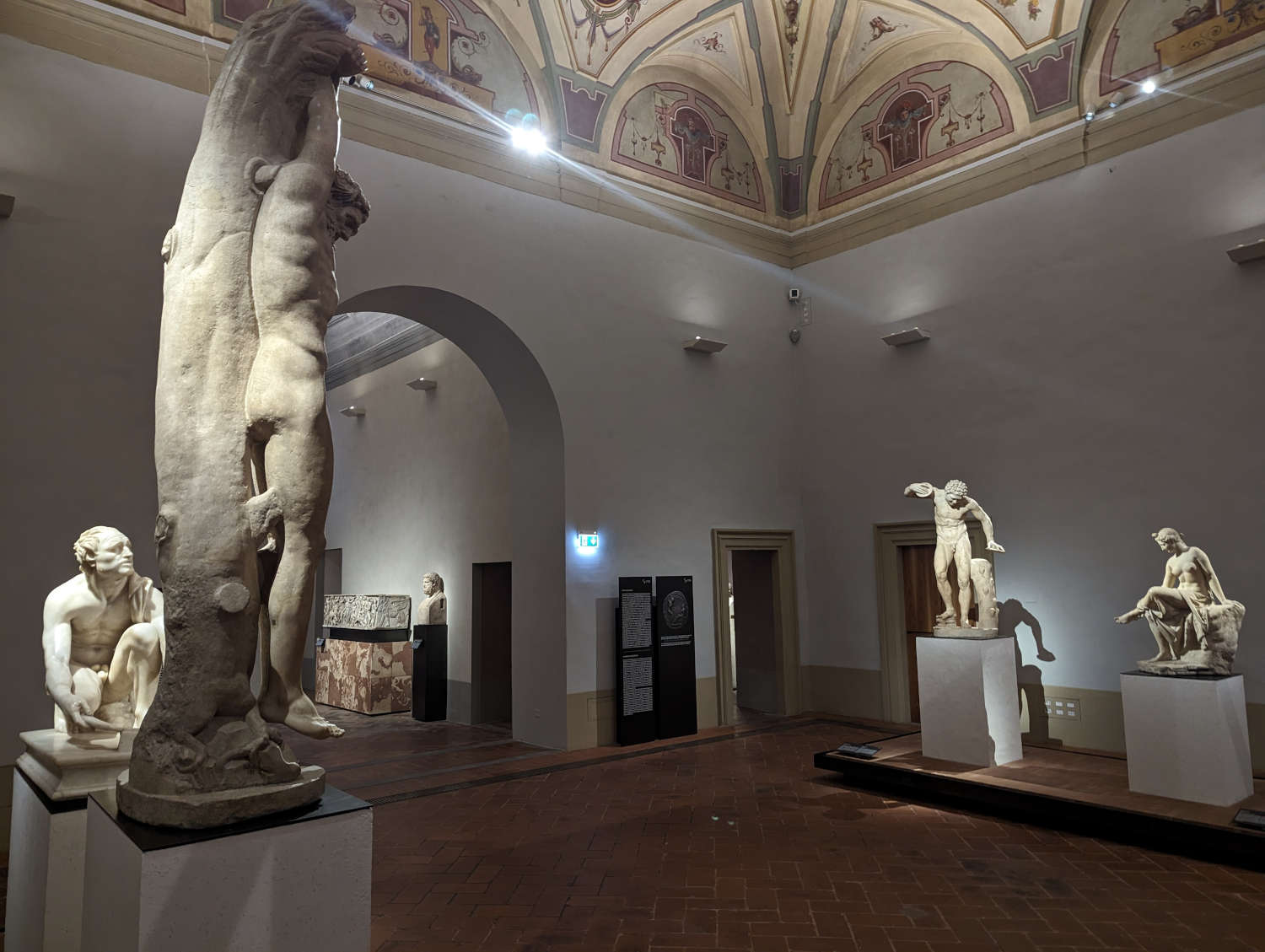 Arrangements of
Arrangements of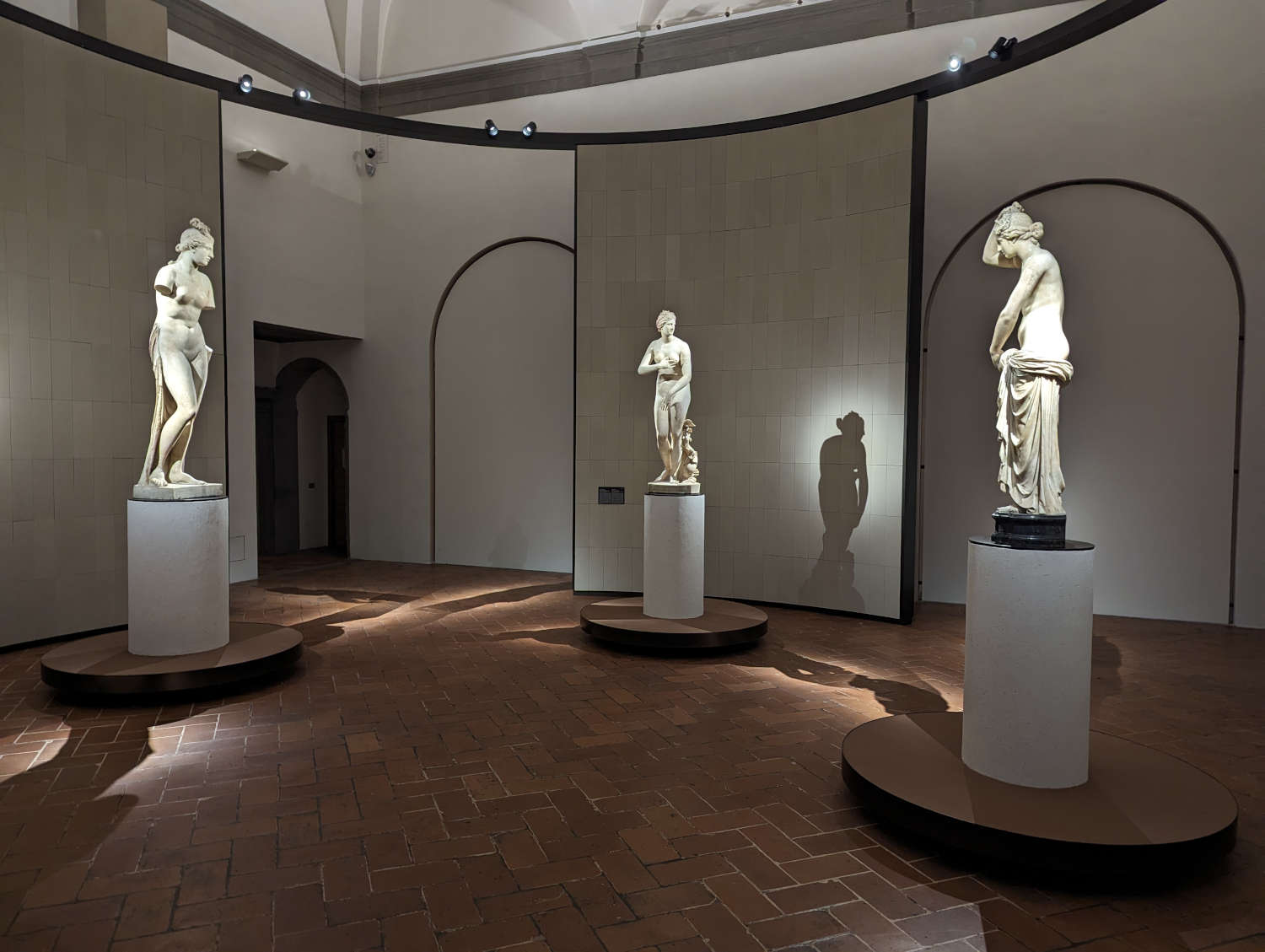 Set-ups of the exhibition Divina
Set-ups of the exhibition Divina Set-ups of the exhibition Divina
Set-ups of the exhibition Divina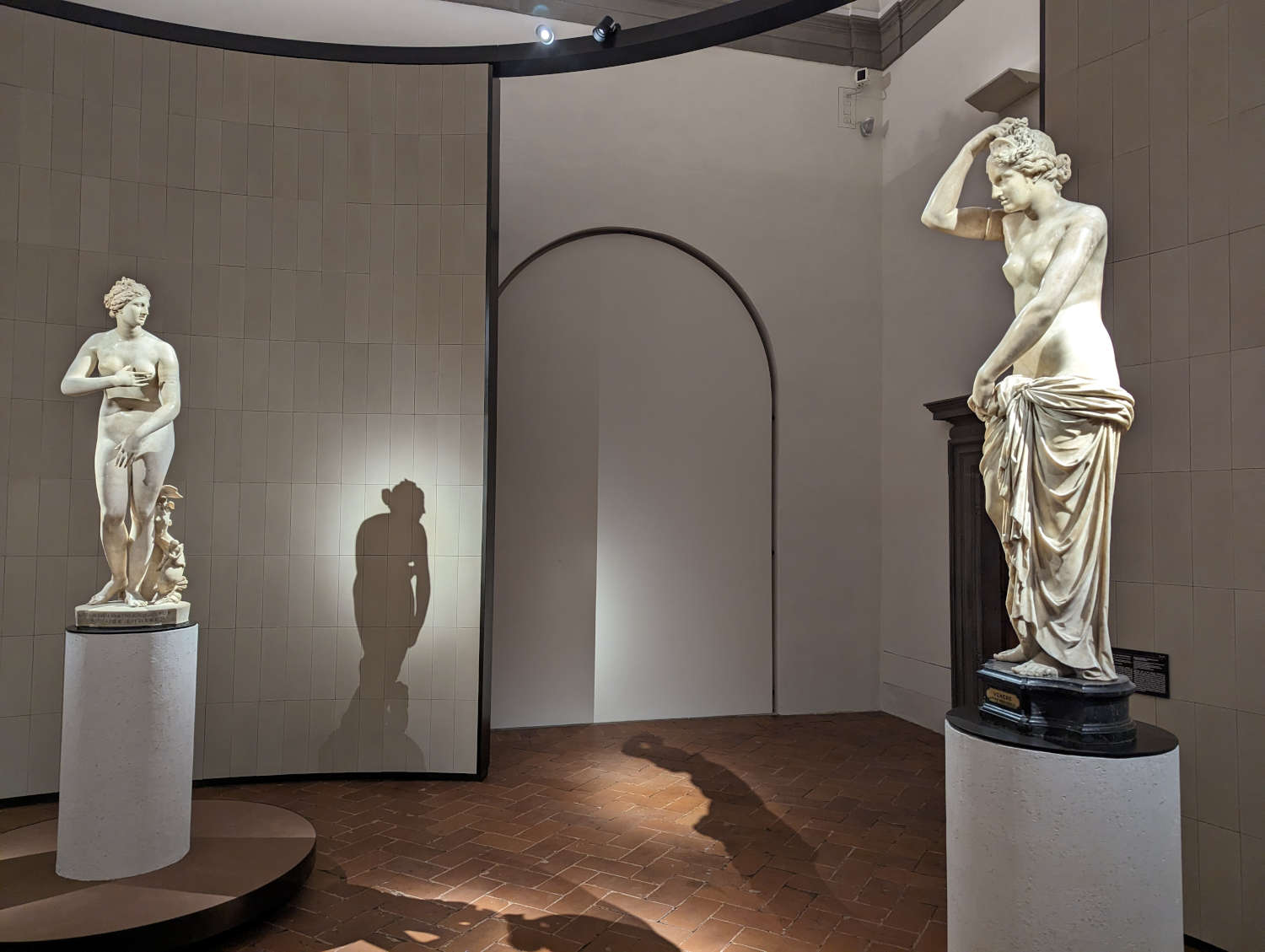 Set-ups of the exhibition Divina
Set-ups of the exhibition Divina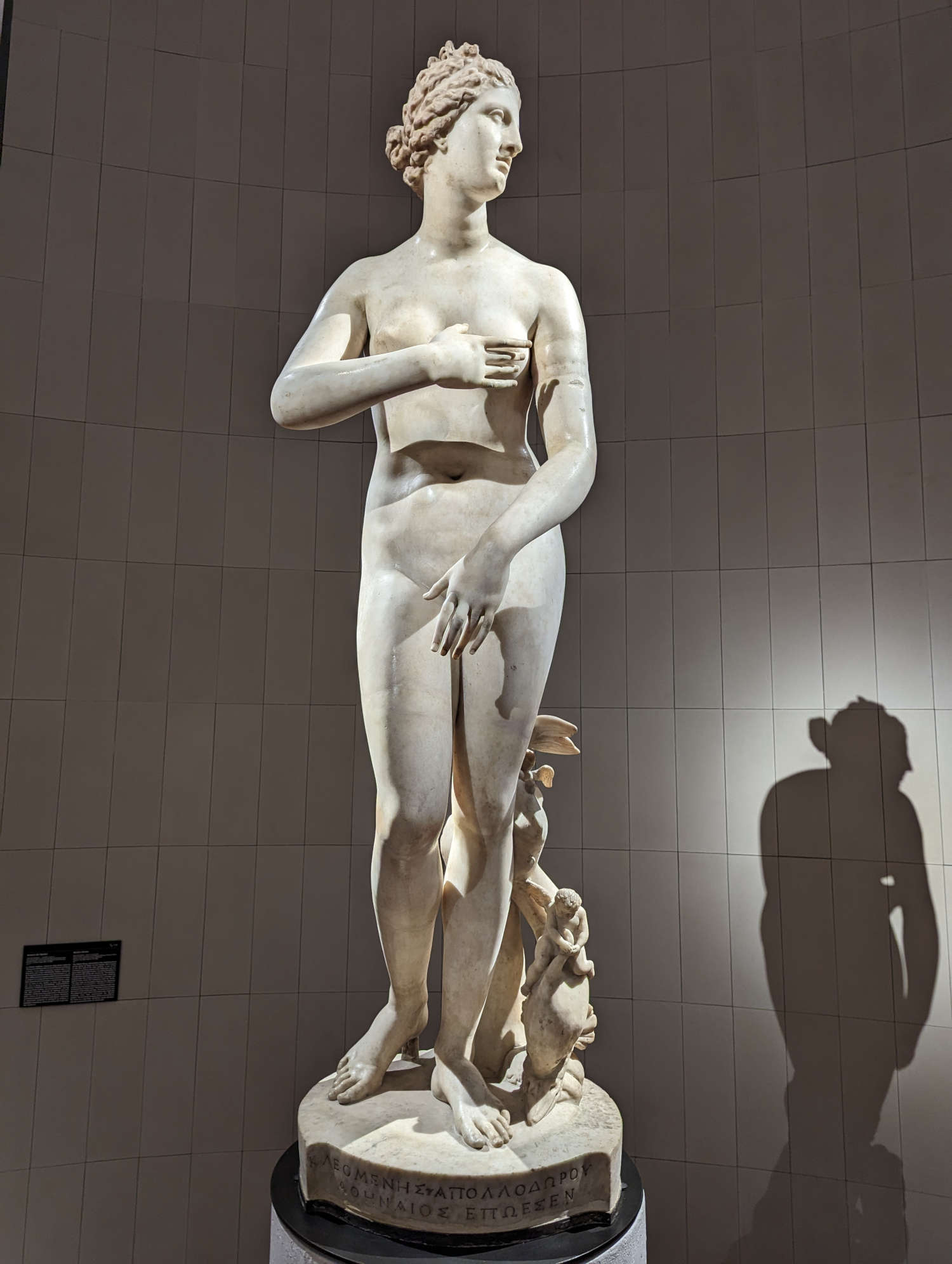 Set-ups of the exhibition Divina
Set-ups of the exhibition Divina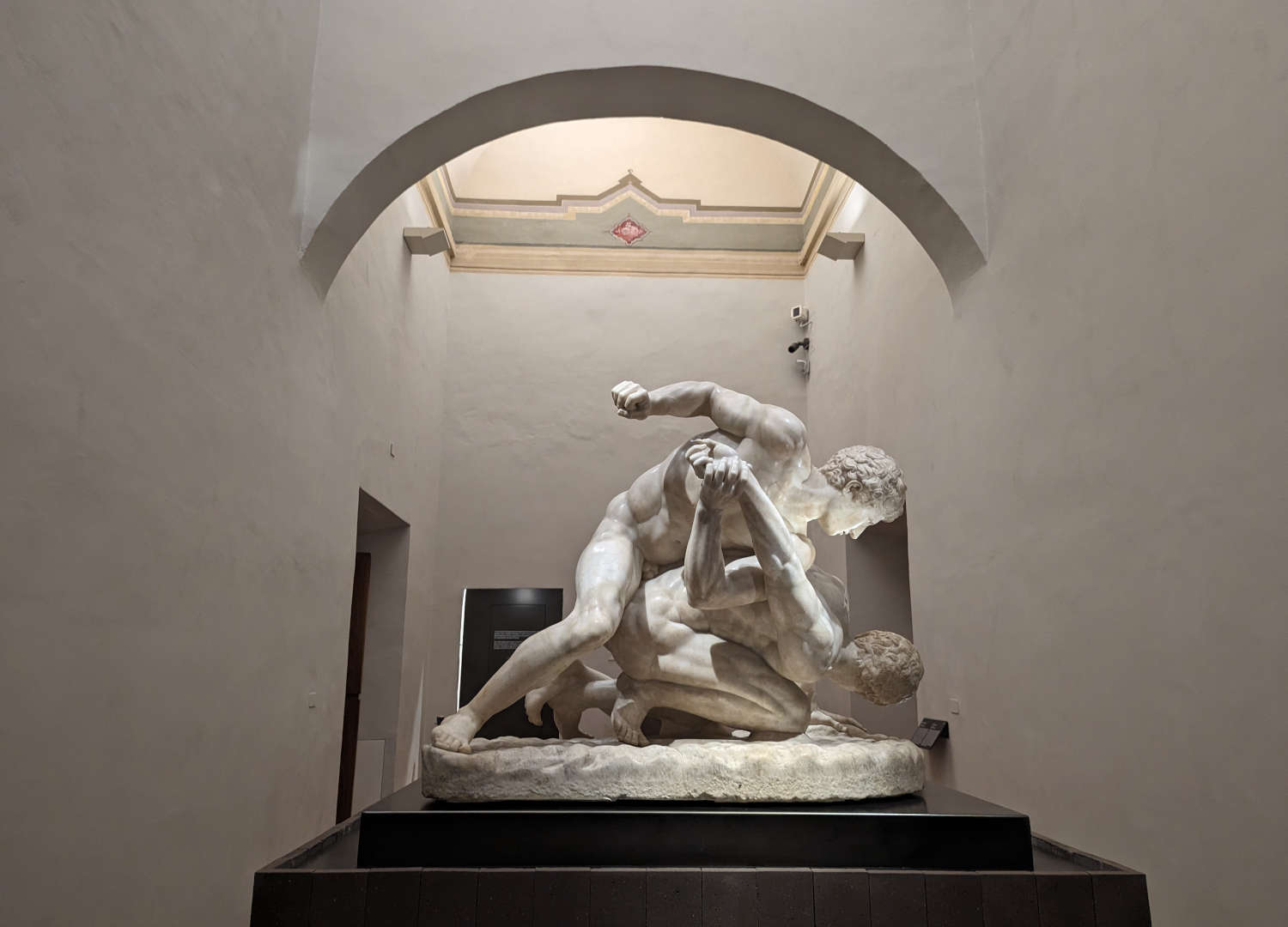 Set-ups of the exhibition Divina
Set-ups of the exhibition Divina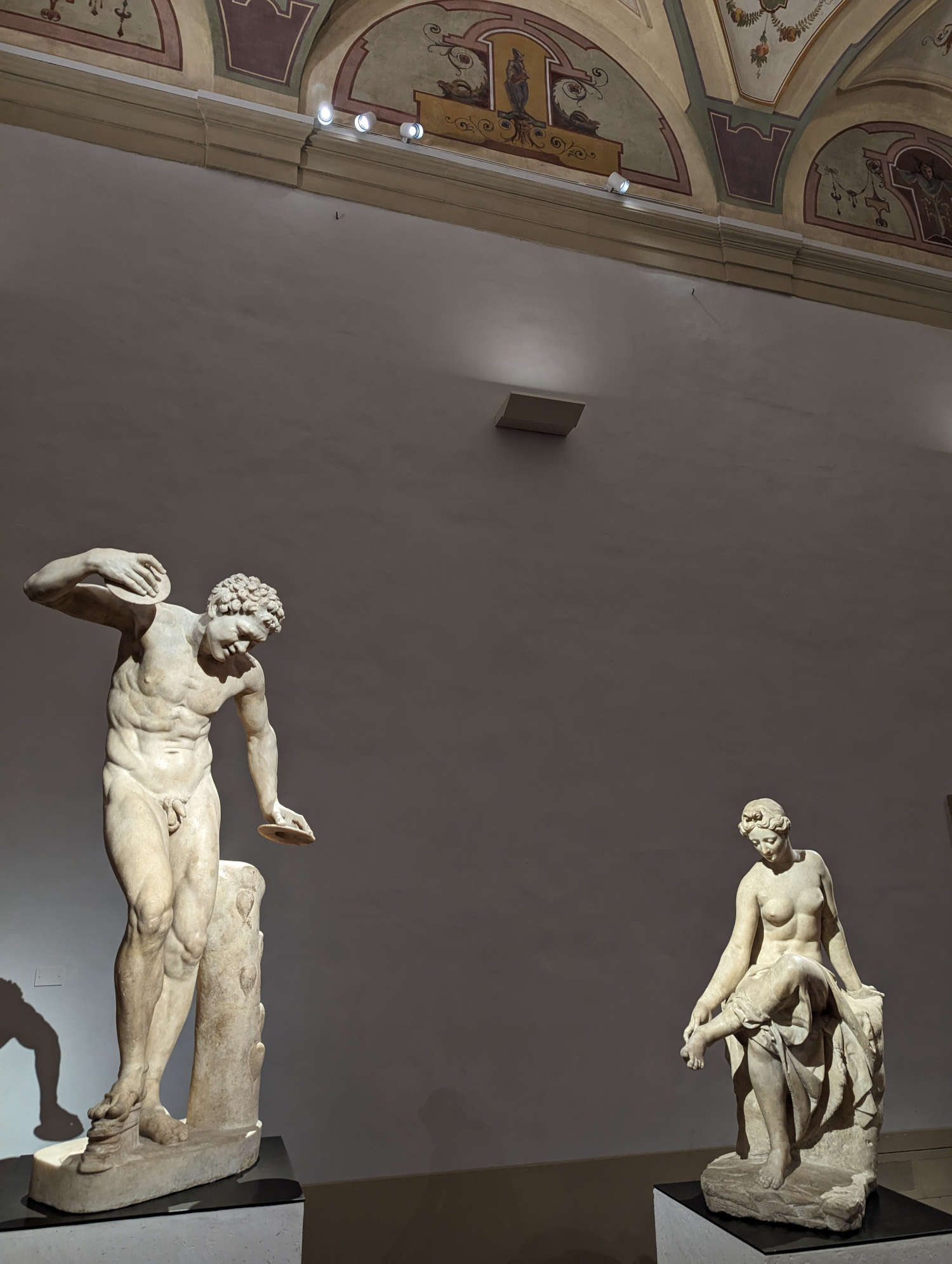 Set-ups of the exhibition Divina
Set-ups of the exhibition Divina Set-ups of the exhibition Divina
Set-ups of the exhibition DivinaSimilarly, theArrotino, one of the Tribune’s historic guests, can finally be brought closer to the hanging Marsyas of the third corridor, so as to restore unity to the group, which was also originally completed by the figure of Apollo, the original of which can be ascribed to scroll workshops of the late 3rd century B.C.Finally, the splendid series of twelve ancient herms with portraits of Greek philosophers, athletes, poets and statesmen, originally intended by Ferdinand I to adorn the garden of Villa Medici on the Pincio, is restored to public interest in its entirety.
“The collection of ancient sculpture at the Uffizi,” stresses director Eike Schmidt, "is the most important in Italy north of Rome, and plays a central role not only in the establishment of the museum, but also as a source of inspiration for the art of later centuries, and not limited to the Renaissance. The exhibition will not only give people the chance to see the greatest masterpieces from all sides, from afar and up close, with new lighting that allows them to study even the remnants of ancient polychromes, but also highlights past and now lost contexts, such as the Hall of the Three Venuses, and even the original ones, putting back together for the first time the groups of theInvitation to Dance and the Punishment of Marsyas."
“Classical statuary has been, for centuries, the main reason why, from all over Europe, people came to Florence to visit the Uffizi Gallery,” stresses Fabrizio Paolucci, curator of classical antiquity at the Uffizi. “This exhibition aims to return, at least for a short time, a leading role to the Greek and Roman marbles that populate the Vasarian complex, offering visitors a selection of the most celebrated ancient masterpieces that have always been the pride of the Medici collections.”
 |
| The Uffizi displays their marble treasures: the Divina Simulacra exhibition |
Warning: the translation into English of the original Italian article was created using automatic tools. We undertake to review all articles, but we do not guarantee the total absence of inaccuracies in the translation due to the program. You can find the original by clicking on the ITA button. If you find any mistake,please contact us.





























